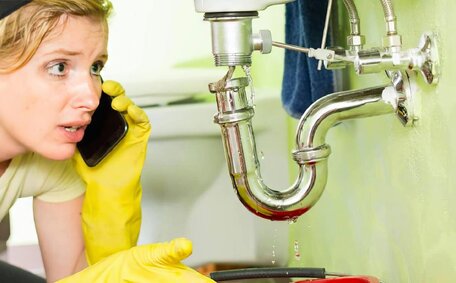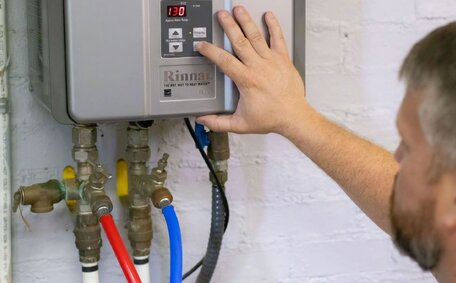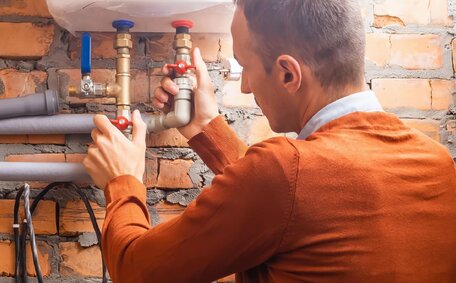Understanding gas heaters and indoor use
LPG and natural gas heaters are efficient indoor heating options that include space heaters, wall furnaces, and central heating systems.
When choosing your heater, it’s essential to select models certified for indoor use, unlike outdoor heaters, which pose safety hazards if used indoors. These appliances are designed to properly vent exhaust gases like carbon monoxide to the outdoors. Using outdoor units, such as patio heaters, as indoor heaters can lead to dangerous gases accumulating indoors.
For safe operation, understand the risks of unserviced gas heaters, ensure adequate ventilation, and engage a licensed gas fitter for regular servicing to minimize carbon monoxide poisoning. Furthermore, installing alarms that detect air pollutants such as carbon monoxide is critical.
By adhering to thorough safety guidelines and ensuring proper venting and maintenance, you can use your heater effectively for safe indoor heating. Certified indoor gas appliances are crucial to prevent health risks from uncontrolled gas combustion.
Potential risks of using gas heaters indoors
Using indoor natural gas heaters involves several health and safety risks:
- Natural gas heaters emit warmth while discharging harmful air pollutants, such as nitrogen dioxide, which can raise indoor levels of carbon monoxide. Exposure to high levels of carbon monoxide can lead to headaches, nausea, and even death.
- When you use unflued gas heater models, they release combustion byproducts, which can worsen indoor air pollution and raise concerns about risks like childhood asthma and safe usage of indoor gas heaters.
- Faulty and unserviced gas appliances heighten the risk of leaks, explosions, and fires.
- Inadequate ventilation while using a gas heater indoors allows pollutants to accumulate to dangerous levels.
Having your heater serviced mitigates any increased risks, making sure you can use a gas heater safely in a certified and properly installed indoor setting. Adequate ventilation, working carbon monoxide alarms and avoiding extended use are also vital precautions when using gas heating indoors.
Carbon monoxide poisoning
Correct operation of your gas heater, particularly avoiding the use of outdoor models indoors, is critical to prevent dangerous carbon monoxide buildup due to malfunction or misuse.
Carbon monoxide inhaled can bind to haemoglobin, impeding oxygen transport within the body and potentially causing symptoms such as headaches, nausea and, in extreme cases, death.
Implementing a carbon monoxide alarm is a critical safety step for any household employing gas appliances. Maintain CO alarms at least once every two years, ensure installation near bedrooms, and replace them at least every two years to maintain optimal safety.
When wondering 'What do I do about unflued gas heaters?' remember that lack of ventilation and improper appliance maintenance elevate the risks of CO poisoning. It’s a legal requirement for gasfitters and plumbers to install CO alarms when servicing gas heating systems, including unflued models.
Accidental CO poisoning claims over 60 Australian lives annually. It’s crucial families recognise the warning signs, guarantee functioning CO alarms, and service gas heaters annually to avert exposure.
Fire hazards
If misused, gas heaters can significantly increase fire risk. Avoid operating heaters under hazardous conditions such as:
- Placing heaters too close to curtains, furniture or other flammable materials
- Knocking over poorly located portable space heaters
- Avoiding damaged or faulty appliances prevents gas leaks and saves trouble.
- Neglecting to cut off the gas is an avoidable risk with attentive use and proper handling
To reduce risks:
- Carefully follow manufacturer guidelines on clearance distances from walls and items
- Ensure your heater meets Australian safety standards
- Install a fixed gas heater securely to use your propane heater safely and avoid using propane models in a portable format long-term
- Maintain a clear area around gas heaters and refrain from hanging items above them
- Ensure your heaters are regularly serviced by a licensed professional
With careful placement, compliant models, and consistent maintenance, these safety tips can render your gas heater safe for secure indoor use and efficient warmth.
Ensuring proper ventilation
Proper ventilation is essential for safely using gas heaters indoors. Gas heaters require proper air circulation to combat cold air, operate safely, and dissipate combustion byproducts like water vapour and dioxide carbon.
Insufficient airflow can lead to dangerous carbon monoxide levels and accumulation of other hazardous gases, detrimentally impacting air quality:
- Carbon monoxide
- Nitrogen dioxide
- Formaldehyde
Though these gases are hidden, and you can’t see or smell them, they can frequently lead to poisonings if ventilation is insufficient. These undetectable gases can harm your health and safety, with symptoms often mimicking the flu and developing rapidly.
Ensuring appropriate ventilation involves:
- Circulate fresh air efficiently by using room fans and opening windows/doors.
- Never blocking vents or air intakes on gas or propane heaters.
- Installing vents and flues if using fixed heaters.
- Placing unflued portable models away from walls and ensuring proper air circulation by operating only in large, well-ventilated rooms.
Follow gas fitter recommendations and manufacturer guidelines, as ventilation needs differ with heater types. Carbon monoxide detectors offer an important safety backup when heating with gas.
With vigilant ventilation and monitoring, families can safely harness the comforts and efficiencies of indoor gas heating during cold weather.
Flued vs unflued heaters
Flued and unflued gas heaters have distinct exhaust venting methods. Flued heaters are ducted to vent all combustion byproducts directly outdoors. Unflued heaters emit gases such as carbon monoxide, nitrogen dioxide, and water vapour directly into your living space.
Flued heaters are generally safer when correctly installed with sufficient outdoor ventilation, as this minimises risks. Addressing air quality concerns from unflued gas heaters requires limited use in spacious, well-ventilated areas, as they can rapidly degrade indoor air.
Key differences include:
- Flued heaters vent outdoors, unflued release exhaust into the room
- Flued heaters are safer for indoor heating
- Unflued heaters negatively impact indoor air quality
- Flued heaters can be used continuously, unflued units are only for periodic use
Consider flued heaters for safer indoor heating, which offer benefits over the risky long-term use of unflued models. Unflued portable options are risky for extended use, degrading air quality over time by dumping dangerous gases indoors.
Regular maintenance and servicing
Consistent maintenance and servicing are critical for the safe indoor use of gas heaters. Annual servicing by a licensed professional is recommended for your gas heater.
Unlike electric heaters, this maintenance is vital to ensure:
- Ensuring your heater’s efficient and safe operation
- Your gas heater can have gas leaks or issues identified and fixed
- Safety features are still fully operational
- Air flow and flues are not blocked
- Gas combustion levels meet air quality standards
Maintenance should include inspections of burners, gas valves, flues, and verifying safe carbon production levels. Replacing worn parts can help optimise performance and lifespan.
Families should ensure carbon monoxide alarms are functional on every level during annual servicing, replacing them every 5 years.
Well-maintained gas heating reduces risks and provides reliable cost-effective options to warm up interiors. With proper use and expert yearly servicing, gas heaters can safely deliver comfort through cold seasons.
Installing carbon monoxide detectors
Installing carbon monoxide (CO) detectors is crucial for homes using gas heaters and appliances. These detectors continuously monitor the air for dangerous CO buildup.
Install CO alarms as recommended:
- On every level of the home
- Near all sleeping areas
- Within 5 feet of each bedroom door
Choose CO detectors that meet Australian Standards. They should be either battery-powered or plugin models. Install them at eye level height to maximise effectiveness.
Test CO alarms monthly by pressing the test button, and replace them every 5 years or according to manufacturer guidelines. Implement an annual schedule to replace batteries.
Educate family members on the importance of CO detectors. Make an evacuation plan so everyone knows how to safely exit if an alarm ever sounds.
Used alongside proper use, servicing and ventilation of gas appliances, CO detectors provide low-cost, reliable protection to promptly alert households of hazardous gas buildup.
Safe operation of indoor gas heaters
To ensure safe use of your gas appliances indoors, observe the following steps:
- Choose a certified indoor gas heater. It’s a strict rule that you can use certified outdoor models and portable gas heaters specifically designed for safety reasons.
- Locate the heater away from flammable materials like curtains, following manufacturer clearance guidelines.
- Ensure that your gas heater is installed correctly and it receives annual servicing by a licenced gas fitter.
- Make sure your room has adequate ventilation and never block vents/airways.
- Install and regularly check carbon monoxide detectors in your residence, particularly if you plan on operating heaters for long periods of time.
- Always operate according to the instruction manual.
- Refrain from leaving heaters unattended for long periods of time when they are in operation.
- Turn off the heater when not in use or when leaving the room.
- Educate children to stay away and not touch hot surfaces.
Gas heaters need vigilant operation and maintenance to ensure gas heater safety and prevent hazardous gas accumulation. Following safety guidelines can ensure the reliable, efficient heating performance of these appliances indoors.
When to replace your gas heater
There are several signs indicating when an indoor gas heater should be replaced:
- The appliance is over 10 years old. Most heaters efficiently heat your home and have an effective lifespan of 8-12 years.
- You notice deteriorating performance, insufficient warmth or higher running costs.
- The unit can make frequent repairs and replacement parts necessary to keep functioning.
- Gas smells or leaks are occurring, signalling potential hazards.
- The model lacks modern venting, emissions or safety features. New heaters meet stricter air quality and efficiency standards.
- Upgrading can also provide better heating, safety, efficiency and lower energy bills.
New heaters often have convenient touches like programmable thermostats and low gas indicators too. Considering a replacement gas heater every 10-15 years ensures your home has an effective, safe and energy-saving indoor heating solution.
Seek advice from our experienced gas heating specialists to check your current system, including the gas stove, and provide tailored advice on alternatives, maintaining your household’s comfort and energy efficiency into the future.






